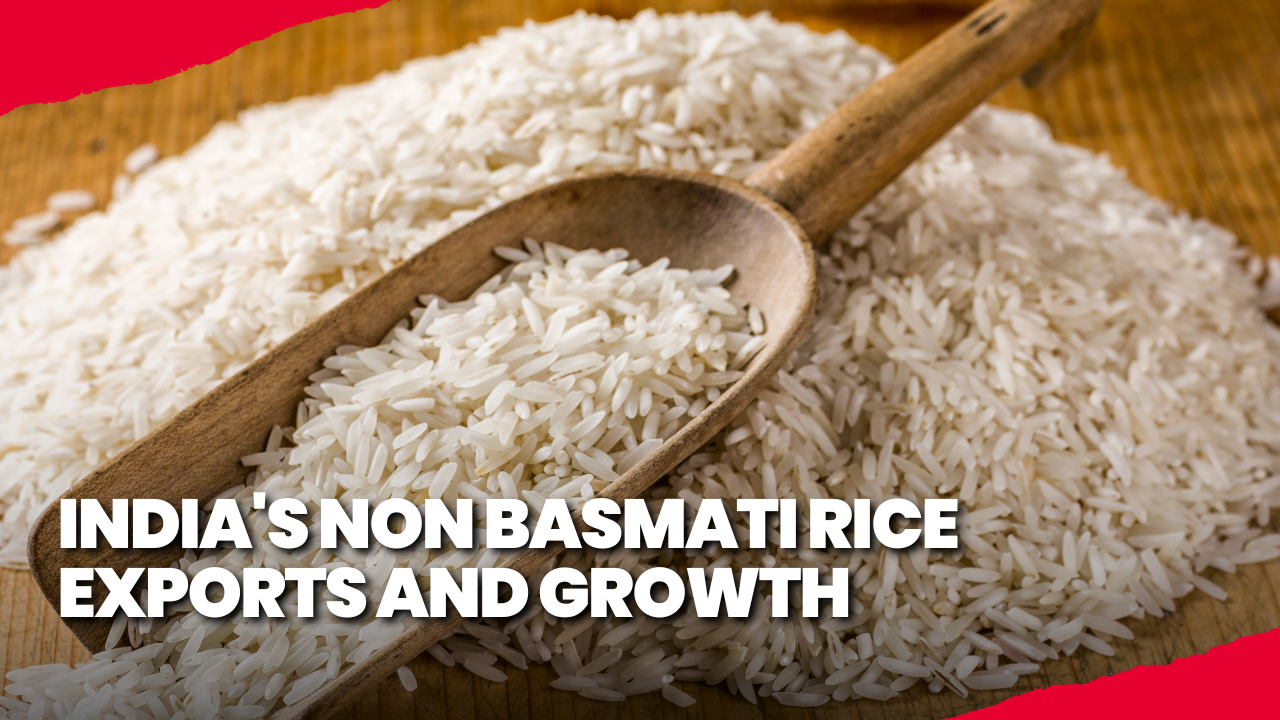
India is the largest rice producer, and in June 2025, a record monsoon harvest pushed the Food Corporation of India’s reserves to an all-time high of 59.5 million tons. With such a surplus, significant quantities of rice were diverted for ethanol production instead of food consumption. This new development additionally opened up conversations about the scale and sustainability of rice export by India, as the country balances domestic needs with its role in international grain markets.
But even though more and more people are using ethanol, exporting is still the most important thing. This change is more than just an economic one for non basmati rice suppliers; it’s also a strategic one. Let’s look at India’s position as a major rice exporter, the potential for non basmati rice suppliers, and what lies ahead.
India’s Effects on the International Rice Trade
Presently, about 40% of the world’s rice exports come from India. By 2025–26, shipments are expected to reach a record 24 million tons. That domination includes both aromatic basmati and non-basmati varieties in bulk. In 2024, non basmati rice exports were about 11.1 million tons, while exports of basmati rice were only 5.24 million tons. This shows how big the trade in complementary grains is.
The government’s choice to lift export limits and set floor prices (then take them away completely) for non-basmati white rice has increased exports, kept prices stable, and placed pressure on competitors in Thailand, Vietnam, and Pakistan. Despite a 6.9% drop in shipments of non-basmati rice in 2024 as a result of rising prices, rice export by India remain vital for food security in regions across Africa and Asia.
The Growth of Non-Basmati Rice Suppliers
India has become a major supplier of non-basmati rice since it has a lot of compliance and cost-effective manufacturing. Suppliers are packaging rice to match international requirements, from the southern Sona Masoori to Andhra’s Silver 407. India’s credibility in the market is boosted by rigorous quality control, which includes checking for contaminants, testing for moisture, and making sure that the grains are all the same.
Olam Agri India, ITC Limited, and Shiv Shakti InterGlobe are some of the biggest exporters in the entire world. It is transforming the industry by adding non-basmati operations to their basmati lines and expanding into new markets in Africa, Southeast Asia, and the Middle East.
Why It’s Necessary to Increase Exports of Non-Basmati Rice
- Countries like Bangladesh, Cameroon, and Kenya eat a lot of non-basmati white rice.
- Non-basmati rice is popular with a wide range of people, so demand stays steady, even as floor prices go up.
- Extra grain can be diverted into export or ethanol production to avoid local market saturation, which helps to mitigate excesses resulting from increasing stockpiles.
- When India increases shipments, global rice prices go down, which helps importers and makes it harder for regional competitors.
Problems with India’s strategy for exporting non-basmati rice
Even though India is the biggest non basmati rice supplier, there are still problems in the industry.
Having too many reserves may help prices today, but damage them later. The ethanol approach is only a short-term solution. Midway through 2023, to stabilise home prices, exports were restricted, which caused a sharp fall in international supply and brought competing exporters into the spotlight.
The initial minimum price of $490 per ton helped farmers but made it more expensive for exporters, thus it was taken away. Even though India is big, Thailand, Vietnam, and Pakistan are all quite competitive when it comes to reliability and local ties.
The complexity of the supply chain has been increased by the need for ongoing operational excellence in order to satisfy the demands of foreign buyers in the Middle East, Africa, and Europe for consistent quality and delivery.
Also Read this: What is Difference Between FCL and LCL Shipments?
What Will Happen Next with Non-Basmati Rice Exports
- Bumper crops (146.1 million tons in 2024–25) and powerful monsoons will probably keep things rolling. Expect 22 to 24 million tons of exports by 2026.
- India might increase exports by making long-term deals with East Africa, West Asia, and Southeast Asia. This would happen after shipments to more than 140 nations increased again in 2024.
- Value Added and GI-tagged Rice Unique regional non-basmati varieties, such as Arunachal’s Khaw Tai or Chhattisgarh’s Jeeraphool, are being GI-tagged to get higher prices.
- Government incentives for export-ready infrastructure, such as packaging, testing labs, and logistics, will help both small and large suppliers.
Wrapping It Up
India’s supremacy in non basmati rice exports is more than simply a sign of a lot of rice being grown; it also shows how adaptable the country is in international trade. India still has an impact on the cost of food and security because of government changes, increasing demand in Asia and Africa, and the growth of reliable non-basmati rice suppliers.
As export regulations grow into more stable and value-added varieties get more widely available, rice export by India are likely to keep growing. This will make the country not only the largest exporter, but also a quality-driven force in the international rice market.
FAQs
In terms of non-basmati rice exports, India remains unrivalled. In 2024, it will send out over 12 million tonnes of rice, which is around 40% of all rice shipments.
Major exporters like Olam Agri India, ITC Limited, and Shiv Shakti InterGlobe use strong connections with farmers, quality control, and international distribution networks.
Also Checkout Our YouTube Channel: @limeinstituteofexportimport






